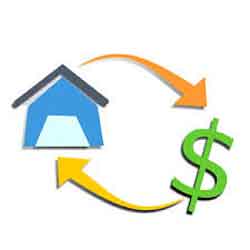Migration to different states has caused a new curiosity in the differences in state laws, ordinances and tax regulations. Flat taxes, tax credits, personal taxes, caps and gaps and other terms, all add to the confusion. This article attempts to explain some ways on how states can be different and offer links to resources.
Market-based Property Tax System

The state of Indiana is an example of a state government that uses the most popular property tax revenue collection method. A variation of the Market-based Property Tax System is implemented in 48 other states.
Property taxes in Indiana are assessed yearly calculated on the prior year’s taxes and the current sales of properties in the area. Certified appraisers consider the economy and other marketing factors to arrive at a fair market value for property in the township, neighborhood or city. In Indiana, the property taxes are normally paid for the previous year in two installments. Popular State Property are available in this website and you can find additional Property there, too.
According to In.gov, Department of Local Government Finance: “Property Tax Terms,” the tax rate is determined in terms of “dollars per $100.00 of assessed value.”
Personal Property Taxes
An example of a Personal Property tax is the assessments of movable items not permanently attached to the property, appliances, furniture, equipment, vehicles, the owners motor homes, etc.
Homestead Tax Credit
Many states offer the Homestead Tax Credit. The method of credit would be in the form of an income tax reduction or reduced tax assessment on the property.
A tax credit may be available for residential property owners for a primary resident. In Indiana, the Homestead Tax Credit allows for taxes to be levied on one half of the assessed value of the property. In some states, such as Michigan, the relief may come to the property owner in the form of a deduction on state income taxes. Some states may limit this credit to certain groups, such as senior or low income property owners.
Proposal A – State Equalization Value and Taxable Value
The State of Michigan levees property taxes on one half of the evaluation of the state assessed value or State Equalization Value, (SEV). The half of the (SEV) or Taxable Amount is then multiplied by the mileage levied in the township or city and the result is the amount of property tax owed.
Property owners are often confused in bad economic times because the SEV and Taxable Value has stayed the same even though the real estate assessments for homes have dropped drastically with inflation. There are several reasons why this is happening.
With Proposal A in the state of Michigan, the State Equalization stays the same on a home unless there are improvements, such as construction, that add value to the home. Therefore the one half of the SEV or Taxable Value stays the same, or fluctuates with new area or improvement value. Also, if the home is sold, the Taxable Value is adjusted to the SEV, and the new owners must pay property taxes based on the full assessed state value.
Consider the Property Tax Structure
Check the target state’s average property tax structure as a major consideration for buying property. According to Low Property Tax.net, the average annual tax assessment for the U.S. is $1132 with the highest average being in New Jersey at $2206 and the lowest in Alabama at $394.
